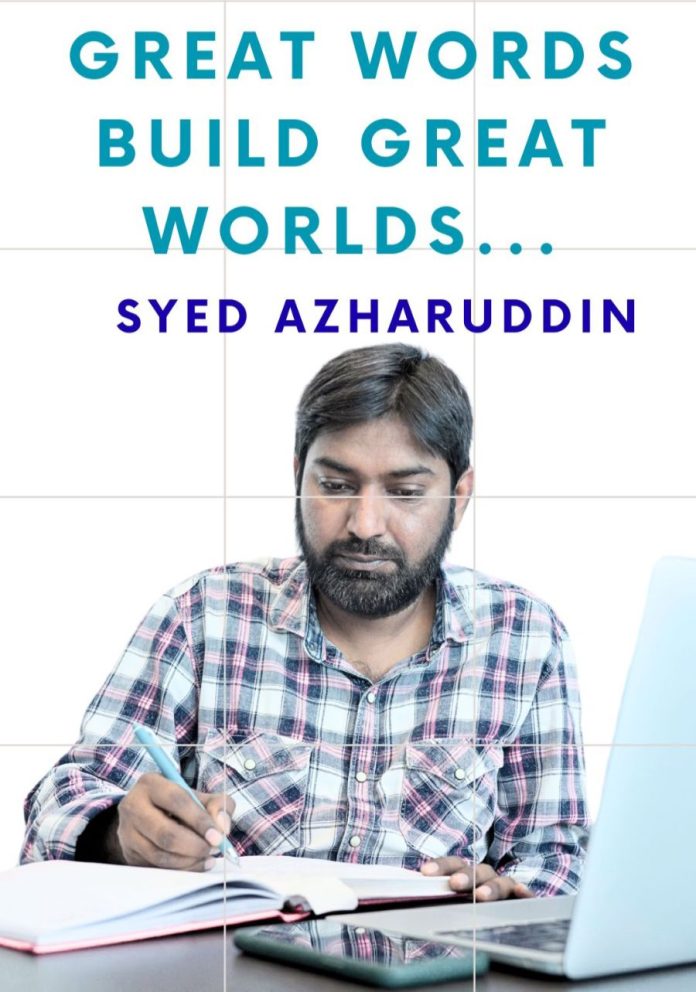– Syed Azharuddin
Communication is not merely the art of speaking; it is the power to shape hearts, mobilise communities, and transform civilizations. From storytelling to public speaking, from media literacy to message testing, history’s most enduring leaders have excelled in mastering these crafts. Among them stands the life of Prophet Muhammad ﷺ, whose ability to communicate with clarity, compassion, and conviction continues to inspire leaders, scholars, and reformers across the world.
Even non-Muslim biographers have acknowledged this. The French historian Alphonse de Lamartine wrote in Histoire de la Turquie (1854): “Philosopher, orator, apostle, legislator, warrior, conqueror of ideas, restorer of rational dogmas, of a cult without images; the founder of twenty terrestrial empires and of one spiritual empire – that is Muhammad. As regards all standards by which human greatness may be measured, we may well ask, is there any man greater than he?”
This article explores how he developed and demonstrated four essential elements of communication craft –storytelling, public speaking, media literacy, and message testing – and how these timeless lessons can guide us today.
Storytelling: Weaving Narratives that Live Forever
Stories are the language of the heart. Long before literacy became widespread, human beings passed wisdom through tales. The Prophet Muhammad ﷺ perfected this form by drawing from parables, metaphors, and lived experiences.
Qur’anic Narratives: The Qur’an, revealed to him, is filled with stories of past nations and prophets. When people asked about the people of the cave or Dhul Qarnayn, he narrated not as a historian but as a moral guide – each story carried lessons of resilience, humility, and divine guidance (Surah Al-Kahf, 18:9–98).
Everyday Analogies: He explained profound truths through simple imagery. Once, to explain the value of prayer, he said: “If one of you had a river by his door in which he bathes five times a day, would any dirt remain on him?” (Bukhari, Muslim). With one image, everyone understood.
Emotional Impact: His stories were not detached lectures; they connected emotionally. When he narrated the story of the three men trapped in a cave who were saved by their sincerity, he moved his listeners to tears, instilling the value of truthfulness and reliance on Allah (Sahih Bukhari).
Modern communicators – whether entrepreneurs, teachers, or activists – must learn to tell stories that are not just informative but transformative.
Public Speaking: From the Marketplace to the World Stage
The Prophet Muhammad ﷺ lived in a culture where oral eloquence was the pinnacle of prestige. Yet he surpassed the most eloquent poets and orators not through ornamented words, but through sincerity, rhythm, and relevance.
Conciseness with Depth: The companions said he spoke “jawāmi‘ al-kalim” – words few in number but vast in meaning (Bukhari). A single statement could be reflected upon for generations, such as: “Actions are judged by intentions.”
Adaptation to Audience: His public speaking varied with context. In sermons, his voice would rise, eyes redden, and passion flow, so much so that listeners felt “as if he was warning an army of an imminent enemy” (Muslim). But with children, he spoke softly, often kneeling to their level.
Courage Under Pressure: On Mount Safa, he gathered his tribe and asked if they would believe him if he warned of an enemy behind the hill. When they affirmed, he declared his divine mission. Facing ridicule and hostility, his words carried unmatched confidence and clarity (Ibn Hisham, Sirah).
The British historian Thomas Carlyle, in Heroes and Hero-Worship (1840), wrote: “A silent great soul; one of that who cannot but be earnest. He was to kindle the world; the world’s Maker had ordered so.”
Public speaking is not about theatrics but about conviction. When you speak with sincerity, purpose, and following it, your words resonate beyond the moment.
Media Literacy: Engaging with the Information Ecosystem of His Time
The Prophet Muhammad ﷺ lived in an oral society, yet he displayed remarkable media literacy – the ability to discern, interpret, and leverage information channels.
Poetry as Media: In Arabia, poets were the media influencers of their time. He encouraged companions like Hassan ibn Thabit to use poetry in defence of Islam, saying, “Ridicule them through your poetry, for it is more severe on them than arrows” (Bukhari). This was a counter-narrative strategy.
Diplomatic Letters: He dictated carefully crafted letters to emperors and rulers – to Heraclius of Byzantium, Chosroes of Persia, and the Negus of Abyssinia – each tailored in tone and content to its audience. These letters were media messages that bridged cultures.
Recognising Fake News: When rumours spread during the expedition of Banu Mustaliq (the slander against Aisha RA), he neither dismissed nor accepted hastily. He waited for revelation, teaching his followers the importance of verification (Surah An-Nur, 24:11–16).
Media literacy is not new. It is about filtering truth from falsehood, using platforms wisely, and ensuring messages are tailored and authentic.
Message Testing: From Private Circles to Global Audiences
Great communicators refine their messages, testing them in smaller circles before addressing wider audiences. The Prophet Muhammad ﷺ did the same with divine wisdom.
Gradual Revelation: The Qur’an was revealed over 23 years, addressing situations as they arose. This gradual communication ensured that the message was absorbed, lived, and internalised step by step.
Private to Public: His mission began with private conversations – first with Khadijah, then with Abu Bakr, Ali, and close family. Only later did he move to public preaching, showing the importance of scaling messages strategically (Ibn Ishaq, Sirah).
Feedback from Companions: He often asked companions questions, listened to their answers, and built on their responses – a form of message testing that kept his communication interactive, not one-way.
The Indian thinker Mahatma Gandhi once reflected on the Prophet Muhammad ﷺ’s gradual method: “I wanted to know the best of the life of one who holds today undisputed sway over the hearts of millions… I became more than ever convinced that it was not the sword that won a place for Islam in those days. It was the rigid simplicity, the utter self-effacement of the Prophet, the scrupulous regard for pledges, his intense devotion to friends and followers, his intrepidity, his fearlessness, his absolute trust in God and in his own mission.” (Young India, 1924).
Effective communication is not about one viral moment but about building a consistent message that grows stronger over time.
Communication as a Legacy
Communication was not an accessory to the Prophet Muhammad ﷺ’s mission – it was at its heart. Through storytelling, he touched hearts; through public speaking, he moved masses; through media literacy, he shaped narratives; through message testing, he built a movement.
Today if we wish to change the world – whether through social entrepreneurship, activism, or scholarship – they must learn that communication is not manipulation, but transformation. It is the craft of carrying truth with clarity, courage, and compassion.
In the end, the Prophet Muhammad ﷺ did not leave behind palaces or treasures. He left words – words that became light for civilizations. That is the power of communication at its highest form.




